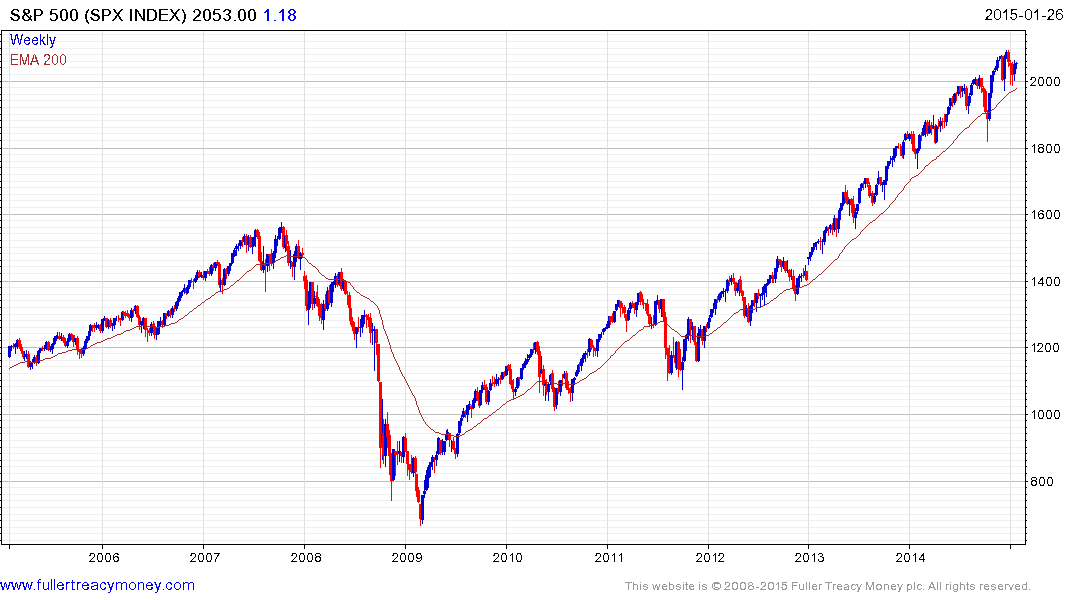Email of the day on the Global Corporate Autonomy Fund
Thank you very much for getting involved in the new fund of Autonomies. I have been looking for such an instrument for a long time, and I am delighted you got involved in one. I do not know the person who will run it. But I figure, if he is good enough for you to give your name, he is good enough for me to invest. My question is: Is the timing correct now that many markets are over extended? Should I try to wait for the "famous correction" that many of us have been waiting for in the S&P500. I would be grateful for your views.
Once again thanks a lot.
Thank you for your kind words and for raising a question relevant to all investors. The S&P 500 broke out of a 13-year range nearly two years ago and continues to extend the uptrend. As you know the risk of remaining un-invested in the hope of a better buying opportunity is that the trend moves even higher before pulling back and then perhaps not to where you might have wanted to buy.

At some point the S&P500 will experience a deeper correction than any we have seen since 2011. As you will recall from The Chart Seminar, “a consistent trend is a trend in motion”. The somewhat larger reaction in October was an inconsistency and therefore worthy of mention. The sharp bounce back from that low reasserted the demand dominant environment and the Index continues to find support in the region of the 200-day MA. Until, it breaks the progression of higher reaction lows, currently near 1970, the benefit of the doubt must be given to the upside.
Since this is a consistent trend we can script what a medium-term top might look like. There is every chance that the breakout from a 13-year range signals the beginning of a secular bull market but even in that scenario it is reasonable to think the advance will be punctuated by medium-term corrections which will offer attractive buying opportunities. A Type-1 top would be evidenced by a noticeable pick up in the pace of the Index’s advance. A Type-2 top would be evidenced by a loss of momentum, possibly failed upside breaks and eventually a massive reaction against the prevailing trend. A type-3 top would be characterised by a much more volatile, lengthy, churning environment. At present we do not have evidence of any of these characteristics.
Liquidity has been by far the most important consideration in the health of the market over the last five years. The strength of the US Dollar is already achieving some of the Fed’s objectives in tightening policy so it remains open to question when they will eventually raise rates. The Fed has done a lot of the heavy lifting in terms of supplying the global economy with liquidity but the ECB’s €1 trillion announcement last week, along with the BoJ’s continued program and the potential for additional action by the PBoC suggests that liquidity will be ample for the foreseeable future. Against such an environment I am cautious about being too bearish.
This spreadsheet of all the companies from the Autonomies section of the Chart Library highlights the fact that 110 have lower Estimated P/Es than historic P/Es suggesting earnings continue to grow. 65 have a lower P/E than the S&P500. Since the Autonomy fund will be equal-weighted and will hold the 100 shares with the most consistent trends, the aim is to minimise the risk from potential top formation development in the wider market.
Back to top

